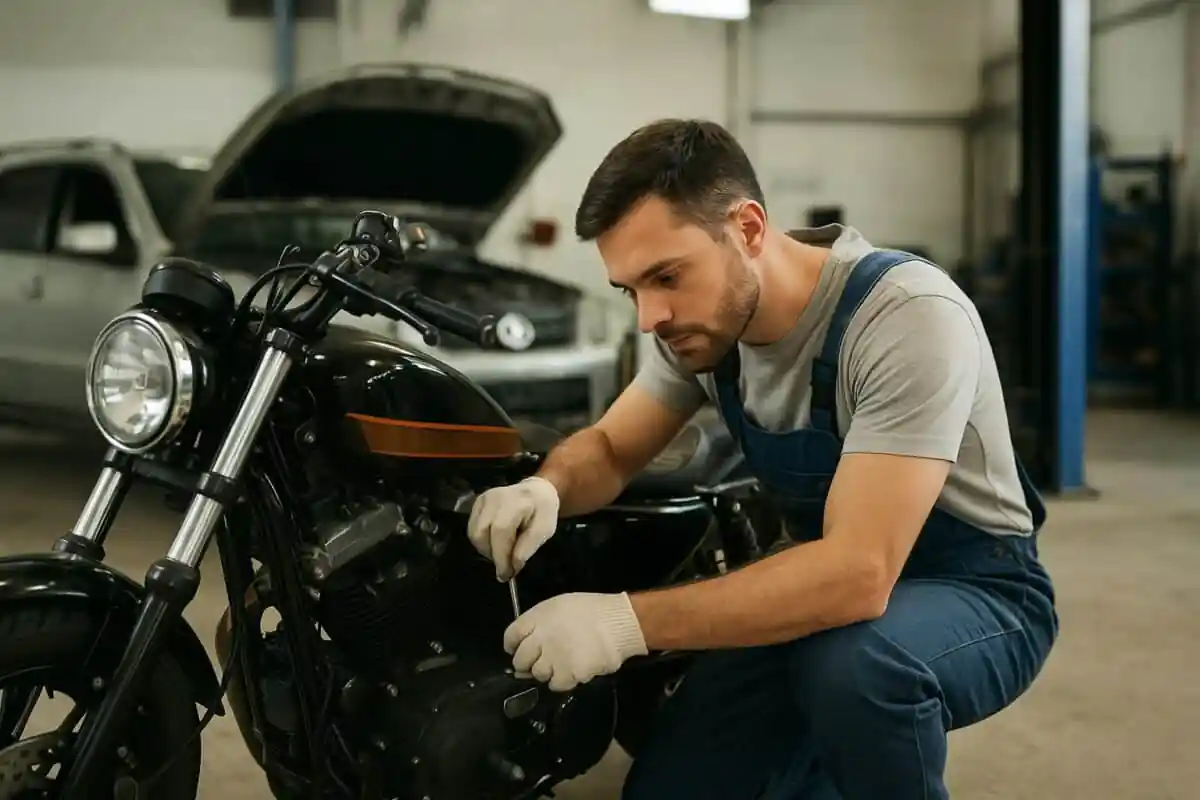
A vetted servicing center plays a major role in how the vehicle recovers from dents, scratches, and collision damage. To ensure quality results, it is important to rely on a skilled motorcycle body shop or an auto body shop.
The technicians in a body shop facility utilize modern tools and high-quality materials to perform repairs and restorations. Their accurate estimates and clear communication instill confidence in customers that their vehicles are in reliable hands.
In today’s market, there are countless options available for repairs. To recognize trustworthy body shops and mechanics near me is the key takeaway.
The guide discusses such hallmarks of reliability for situations where the asset may require professional attention.
What Makes a Body Shop ‘Reliable’?
Unlike a mechanic near me who focuses on the internal and functional systems, a body shop specializes in the cosmetic and external structure of the vehicle. The traits that make a body shop reliable include:
- They deliver long-lasting repairs that are safe, structurally sound, and go beyond surface fixes.
- The paint and finishes are matched flawlessly, making the body work indistinguishable.
- The auto body shop meets the stated timelines and estimates. If there are any changes, they inform the client first and provide explanations promptly.
- The centers utilize appropriate parts and durable materials, ranging from OEM to high-quality aftermarket.
- They believe in documenting everything and providing clear warranties.
- The service is customer-focused with proactive communication.
What to Look For in a Reliable Mechanic Near Me?
Expertise of Technicians
In auto body shops, the employees are I-CAR or OEM certified. While the technicians of a motorcycle body shop have received frame or geometry training alongside OEM.
These certifications are proof that the person has passed rigorous training and demonstrated hands-on skills with competency and professionalism.
Facility Credentials
The workshop has the authority and access to the factory-stated paint codes, specialized tools, specific repair areas, and welding records.
Operational Benchmarks
The business has received valid licenses, insurance, and safety records. They also have structured guidelines for registrations, repairs, quality assurance, and handover.
What Equipment do They Use?
- Automated frame correction system
- Enclosed spraying booth
- Manufacturer-approved paint mixing system
- Advanced welders, designated for handling different materials (steel, plastic, aluminum)
- Diagnostic scanners and electronic calibration tools
- Automotive lifts to ensure safety during repairs.
What is the Repair Process?
Preliminary Checks and Pricing
The servicing shop thoroughly inspects the vehicle for visible and concealed damage. All the impairments are photographed for insurance coverage.
The worker then prepares a detailed cost breakdown and provides quotations. Once a decision is made, the repairer coordinates with the insurer for approval of claims.
Disassembly and Hidden Damage Evaluation
The technician removes the injured parts and components. In case of any additional issues, they provide a new estimate and discuss it further with the client.
Structural Restorations
Precision is key in this step, as any misalignment affects the safety and handling of any transport.
In an auto body shop, the frame is placed on a rack. The expert technicians use lasers and computerized systems for chassis restorations.
The motorcycle body shop uses hydraulic presses or welding for any bends or cracks.
Cosmetic Repairs
The vehicles are then sent for dent removals, panel replacements, and reshaping or fabrication of parts if necessary.
Paint Treatment
The surface is prepped, colors are matched, and painted in a dust-free environment.
Reassembly
The repair technician then reassembles the parts, mirrors, lights, ADAS calibration, and other accessories. After reassembling, they recheck to ensure the alignment is perfect.
Finishes and Quality Inspection
Lastly, the auto repair specialist cleans the interior and exterior with a shiny finish. After this, they inspect the electrical systems, sensors, and safety features for one last time. At last, they finally test the vehicle on the road to ensure a smooth performance.
Final Delivery
The customer reviews the repair work, and the shop offers aftercare instructions before handover.
Which Red Flags to Look Out For?
- Refusal to provide a written estimate
- Lack of credentials and training, poor ventilation, and dirty booths
- Frequent or uninformed changes in prices
- Strongly promote used or cheap parts
- Bad reviews with consistent customer complaints
- No warranties and poor communication
How to Prepare for a Drop Off?
Document the Damage
Keep photographs or video evidence of the defects from multiple angles. Take close-ups of dents, scratches, and cracks.
Remove Personal Items
Secure all the valuables, personal items, and loose accessories. The shops are not responsible if such items are lost or damaged.
Keep Documents Ready
The clients should bring the necessary paperwork, like insurance and vehicle registration. Inform the shop about custom parts, paint jobs, and performance modifications so that they can handle them accordingly.
Confirm Every Detail
Review the written estimate, settle whether to use OEM or aftermarket parts, ask about timelines, warranties, and updates. In short, remove any misunderstandings or concerns and clearly indicate your expectations.
Body Shop that Indulges in Auto and Motorcycle Repairs
Dr. Ralph’s Automotive Services Center is a mechanic near me that specializes in the overall maintenance of autos as well as motorcycles. We always monitor the condition first, then suggest a service to give you the confidence you need to get back on the road.
